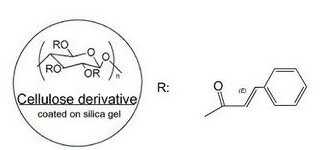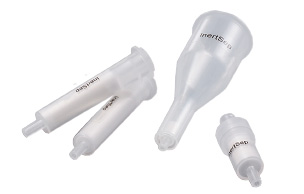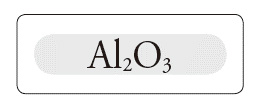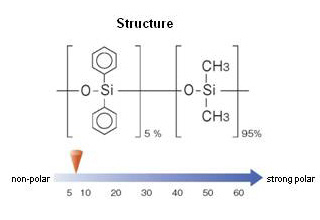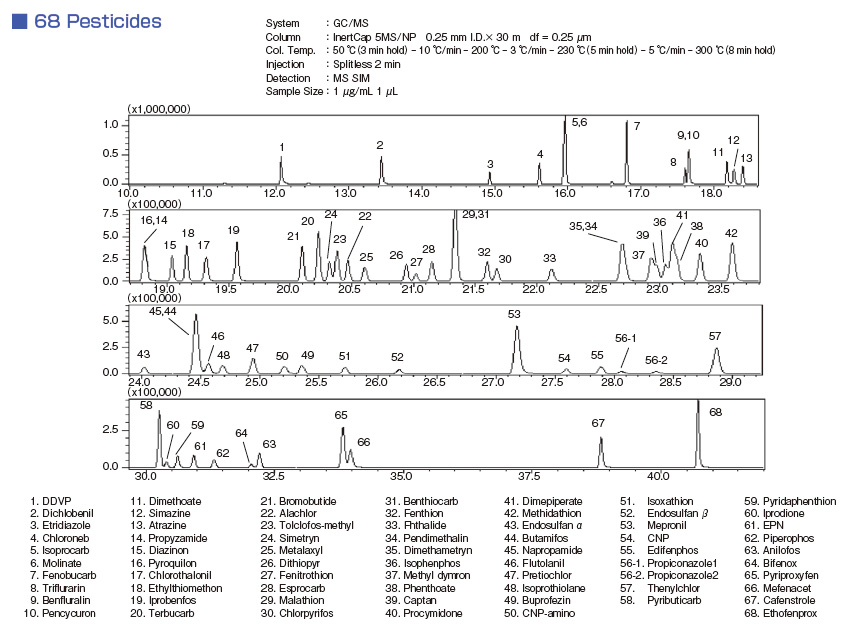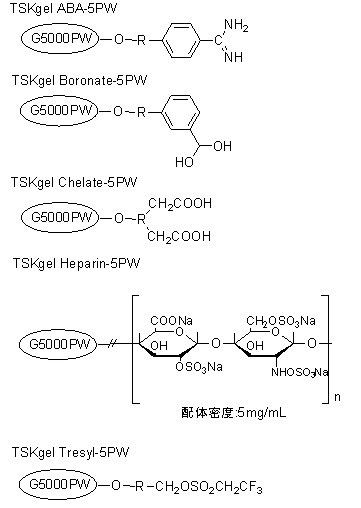- D-乳酸[D-乳酸盐]检测试剂盒[快速]
-
英文名:D-Lactic Acid (D-Lactate) (Rapid) Assay Kit
-
货号:K-DATE
-
规格:50 assays (manual) / 500 assays
市场价: 3200元
分析物意义:水果、蔬菜产品的质量指标
Megazyme检测试剂盒优点:反应快、试剂稳定
The D-Lactic Acid (D-Lactate) (Rapid) test kit is suitable for the rapid, specific measurement and analysis of D-lactic acid in wine, beer, juice, milk, cheese, vinegar, meat and other food products.
Extended cofactors stability. Dissolved cofactors stable for > 1 year at 4oC.
Suitable for manual, auto-analyser and microplate formats.
UV-method for the determination of D-Lactic Acid in foodstuffs,
beverages and other materials
Principle:
(D-lactate dehydrogenase)
(1) D-Lactic acid + NAD+ ↔ pyruvate + NADH + H+
(glutamate-pyruvate transaminase)
(2) Pyruvate + D-glutamate → D-alanine + 2-oxoglutarate
Kit size: 50 assays (manual) / 500 (microplate)
/ 450 (auto-analyser)
Method: Spectrophotometric at 340 nm
Reaction time: ~ 5 min
Detection limit: 0.21 mg/L
Application examples:
Wine, soft drinks, milk, dairy products (e.g. cream, milk / whey powder,
cheese, condensed milk and yogurt), foods containing milk (e.g. dietetic
foods, bakery products, baby food, chocolate, sweets and ice-cream),
vinegar, fruit and vegetables, processed fruit and vegetables, meat
products, food additives, paper (and cardboard), cosmetics,
pharmaceuticals and other materials (e.g. biological cultures, samples, etc.)
Method recognition:
Methods based on this principle have been accepted by DIN, GOST,
IDF, EEC, EN, ISO, OIV, IFU, AIJN and MEBAK
Advantages
- Very rapid reaction with most samples (~ 5 min)
- Very competitive price (cost per test)
- All reagents stable for > 2 years after preparation
- Mega-Calc™ software tool is available from our website for hassle-free raw data processing
- Standard included
- Extended cofactors stability
- Suitable for manual, microplate and auto-analyser formats
Q1. There is an issue with the performance of the kit; the results are not as expected.
If you suspect that the Megazyme test kit is not performing as expected such that expected results are not obtained please do the following:
- Ensure that you have tested the standard sample that is supplied with the Megazyme test kit.
- Send the results of the kit standard, blank samples and the results obtained for your sample, in the relevant MegaCalc spreadsheet (if available) to Megazyme (cs@megazyme.com). Where available the relevant MegaCalc spreadsheet can be downloaded from where the product appears on the Megazyme website.
- State the kit lot number being used (this is found on the outside of the kit box).
- State which assay format was used (refer to the relevant page in the kit booklet if necessary).
- State exact details of any modifications to the standard procedure that is provided by Megazyme.
- State the sample type and describe the sample preparation steps if applicable.
Q2. Should the pH of the sample be adjusted even for samples in acidic media?
The pH of the assay solution after the sample is added should be the same as that of the assay buffer that is supplied with the kit.
Low sample volumes (e.g. 0.1 mL) are not likely to affect the pH of the assay solution and therefore may not require pH adjustment.
Samples above 0.1 mL are more likely to affect the pH of the assay solution and therefore the pH of these samples should be adjusted as described in the data booklet, prior to addition to the assay.
Q3. Can perchloric acid be used to deproteinise/clarify samples prior to analysis using the D-Lactic Acid Assay Kit (K-DATE)? If so, how should such an extraction be performed?
Yes. Perchloric acid extraction can be used in conjunction with this kit, and should be performed as follows:
WARNING: If you have not worked with perchloric acid before, you must consult your safety officer for advice. Also, depending on the nature of the samples, it may be possible to reduce the concentration of perchloric acid, to for example 0.3 M (i.e. in the case of plasma). It is thus very important to determine if this is possible for each type of sample used, in order to reduce the risk from working with concentrated perchloric acid.
Liquid samples:
- Carefully add an equal volume of ice cold 3 M perchloric acid and homogenise / fully disperse the sample (as appropriate).
- After 15 min incubation on ice (or in a refrigerator), centrifuge at 3000 x g for 15 min at 4°C.
- Neutralise by the slow addition of 2 M KOH.
- Incubate on ice (or in a refrigerator) until the potassium perchlorate has settled out by gravity (approximately 10 min), and then simply remove some of the clear supernatant and use directly in the assay.
Solid samples:
- Accurately weigh approx. 5 g of homogenised sample into a beaker containing 20 mL of 1 M perchloric acid and very carefully homogenise with an Ultraturrax® (or equivalent) for 5 min.
- Carefully add approx. 40 mL of distilled water and neutralise using 2 M KOH (using pH test strips for example). Quantitatively transfer the contents to a 100 mL volumetric flask and fill to the mark with distilled water. If a fat layer develops, make sure this is above the mark, and the aqueous layer is at the mark.Incubate in a refrigerator for approx. 20 min to allow separation of fat and precipitation of potassium perchlorate.
- Filter through Whatman No. 1 filter paper, discarding the first few mL of filtrate, and use directly in the assay.
Q4. Sometimes a negative absorbance change is obtained for the blank samples, is this normal? Should the real value (negative absorbance change) or “0” be used in the calculation of results?
Sometimes the addition of the last assay component can cause a small negative absorbance change in the blank samples due to a dilution effect and in such cases it is recommended that the real absorbance values be used in the calculation of results.
Q5. Is the D-Lactic Acid (D-Lactate) (Rapid) Assay Kit (K-DATE) suitable for measurement using cell culture media samples?
Yes, assuming that the concentration of the analyte in the sample (after sample preparation) is above the limit of detection for the kit. It may be sufficient to use the sample directly in the assay after clarification by centrifugation/filtering followed, by dilution (if required) in distilled water.
Q6. Can you explain, step by step, how to follow the method and perform the kit assay?
For users who are not familiar with how to use the Megazyme tests kits then it is recommended that they follow this example, e.g. D-Fructose/D-Glucose Assay kit K-FRUGL (http://secure.megazyme.com/D-Fructose-D-Glucose-Assay-Kit):
1. The kit components are listed on pages 2-3 of the kit booklet.
2. Prepare the kit reagents as described on page 3.
3. For separate measurements of glucose and fructose follow procedure A on page 4.
4. Pipette the volumes listed for water, sample, solution 1 and solution 2 into 3 mL, 1 cm pathlength cuvettes. Duplicate sample assays and duplicate blanks are recommended. Mix the contents of each cuvette by inversion (seal the cuvette using parafilm or a plastic cuvette cap – do not use a finger) then after ~3 min record the first absorbance reading of each cuvette at 340 nm (this is reading A1).
5. Then add suspension 3 and mix the contents of each cuvette by inversion. Incubate for 5 minutes then record the absorbance reading of each cuvette at 340 nm (this is reading A2). NB. It is essential that the reaction is compete. To assess this, record the absorbances at ~ 2 minute intervals and until the absorbance plateaus. A stable absorbance indicates that the reaction is complete. If the absorbance continues to increase then continue to record absorbances until it plateaus and only then record absorbance reading A2.
6. Then add suspension 4 and mix the contents of each cuvette by inversion. Incubate for 5 minutes then take absorbance reading of each cuvette at 340 nm (this is reading A3). NB. As above, assess that the reaction has completed by take subsequent readings at ~2 min intervals.
7. For simple, automated results analysis, input the absorbance readings (A1, A2, A3) for samples and blanks into the K-FRUGL MegaCalc.
To ensure that the assay is working, and being performed correctly it is recommend that the test is performed using the standard sample that is provided with the kit and to obtain the expected values before proceeding to test real samples.
It is recommend that new users also watch this video which highlights how to perform the assays.
Many of the other Megazyme test kits follow a similar format.
Q7. The pH of my sample is low (pH ~ 3.0), do I need to adjust this before I use the sample in the kit assay?
The final pH of the kit assay after the sample is added should not change from what it should be (as stated in the kit for the assay buffer). If it does change then the sample will require pH adjustment. In most cases the sample volume being used is low relative to the final assay volume and in this case the pH of the kit assay is unlikely to be affected.
Q8. How can I work out how much sample to extract and what dilution of my sample should be used in the kit assay?
Where the amount of analyte in a liquid sample is unknown, it is recommended that a range of sample dilutions are prepared with the aim of obtaining an absorbance change in the assay that is within the linear range.
Where solid samples are analysed, the weight of sample per volume of water used for sample extraction/preparation can be altered to suit, as can the dilution of the extracted sample prior to the addition of the assay, as per liquid samples.
Q9. I have some doubts about the appearance/quality of a kit component what should be done9
If there are any concerns with any kit components, the first thing to do is to test the standard sample (control sample) that is supplied with the kit and ensure that the expected value (within the accepted variation) is obtained before testing any precious samples. This must be done using the procedure provided in the kit booklet without any modifications to the procedure. If there are still doubts about the results using the standard sample in the kit then send example results in the MegaCalc spread sheet to your product supplier (Megazyme or your local Megazyme distributor).
Q10. Can the test kit be used to measure biological fluids and what sample preparation method should be used?
The kit assay may work for biological fluids assuming that inositol is present above the limit of detection for the kit after any sample preparation (if required). Centrifugation of the samples and use of the supernatant directly in the kit assay (with appropriate dilution in distilled water) may be sufficient. However, if required a more stringent sample preparation method may be required and examples are provided at the following link:http://www.megazyme.com/docs/analytical-applications-downloads/biological_samples_111109.pdf?sfvrsn=2
The test kit has not been tested using biological fluids as samples because it is not marketed or registered as a medical device. This will therefore require your own validation.
Q11. Can the manual assay format be scaled down to a 96-well microplate format?
The majority of the Megazyme test kits are developed to work in cuvettes using the manual assay format, however the assay can be converted for use in a 96-well microplate format. To do this the assay volumes for the manual cuvette format are reduced by 10-fold. The calculation of results for the manual assay format uses a 1 cm path-length, however the path-length in the microplate is not 1 cm and therefore the MegaCalc spreadsheet or the calculation provided in the kit booklet for the manual format cannot be used for the micropalate format unless the microplate reader being used can.
There a 3 main methods for calculation of results using the microplate format:
- The easiest method is to use a microplate reader that has a path-length conversion capability (i.e. the microplater reader can detect the path-length of each well and convert the individual readings to a 1 cm path-length). This will allow values to be calculated using the MegaCalc calculation software which can be found where the product is located on the Megazyme website.
- Perform a standard curve of the analyte on each microplate that contains test samples and calculate the result of the test samples from the calibration curve (concentration of analyte versus absorbance).
- Perform a standard curve of the analyte in both the cuvette format (i.e. with a 1 cm path-length) and the 96-well microplate format and use these results to obtain a mean conversion factor between the cuvette values and the microplate values. Subsequent assays in the microplate format can then be converted from the calculated conversion factor.
Q12. Can the sensitivity of the kit assay be increased?
For samples with low concentrations of analyte the sample volume used in the kit assay can be increased to increase sensitivity. When doing this the water volume is adjusted to retain the same final assay volume. This is critical for the manual assay format because the assay volume and sample volume are used in the calculation of results.
Q13. How much sample should be used for the clarification/extraction of my sample?
The volume/weight of sample and total volume of the extract can be modified to suit the sample. This will ultimately be dictated by the amount of analyte of interest in the sample and may require empirical determination. For low levels of analyte the sample:extract volume ratio can be increased (i.e. increase the sample and/or decrease the total extraction volume).
Alternatively, for samples with low concentrations of analyte, a larger sample volume can be added to the kit assay. When altering the sample volume adjust the distilled water volume added to the assay accordingly so that the total assay volume is not altered.
Megazyme 溶解淀粉 操作视频
Megazyme 试剂盒样品前处理准备操作视频
Megazyme D-乳酸检测试剂盒D-Lactic Acid 操作视频(K-DATE)

